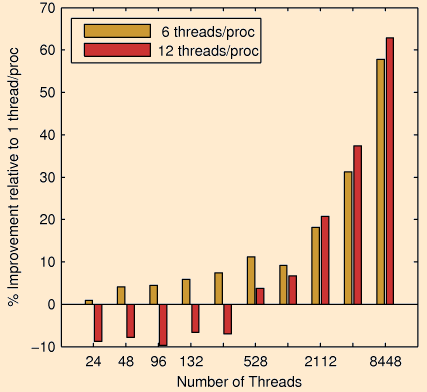Hybrid Parallelization of a Large-Scale Heart Model
In: Rainer Keller,
David Kramer,
Jan-Philipp Weiss, editors:
Facing
the Multicore - Challenge II; Aspects of New Paradigms and
Technologies in Parallel Computing.
Lecture Notes in Computer Science,
Volume 7174, 2012.
ISBN 978-3-642-30396-8 (print), 978-3-642-30397-5 (online).
links
This is a conference proceedings paper. The meeting took place in 2011 and the proceedings were published as a book in the LNCS (Lecture Notes in Computer Science) series in 2012. Both the entire book and the individual chapter are downloadable from the publisher's website, but this may require a subscription. A manuscript created by the authors is also available here. It differs from the published version only by the different page numbers.
doi:10.1007/978-3-642-30397-5_11
abstract
The simulation of the electrophysiology of the heart is challenging due to its multiscale nature requiring the use of high spatial resolutions. Hence, it is important to efficiently utilize large parallel machines. In this article, we present a code designed to meet these scalability challenges on contemporary multicore-based massively parallel architectures. It is based on a well-established model originally designed for shared-memory systems. To improve scalability and extend support to distributed-memory architectures, we developed a hybrid OpenMP-MPI code. The new code shows excellent scalability up to 8448 cores with both explicit and implicit time discretizations. We present an in-depth analysis of the advantages of hybrid parallelization for this type of application.
highlights
tests ran on Cray XT5 and XE6 systems with multicore nodes
monodomain solver weak and strong scaling tested upto 1560 million vertices on 8448 cores
bidomain solver weak and strong scaling tested upto 59 million vertices on 4224 cores
hybrid OpenMP/MPI parallellization was significantly faster than pure MPI due to reduced communication time for core counts of 528 and larger
funding
Computational resources were provided by the Universitá della Svizzera italiana (USI), the Swiss National Supercomputing Centre (CSCS), and the Réseau québécois de calcul de haute performance (RQCHP). This work was supported by the project "A High Performance Approach to Cardiac Resynchronization Therapy" within the context of the "Iniziativa Ticino in Rete" and the "Swiss High Performance and Productivity Computing" (HP2C) Initiative
